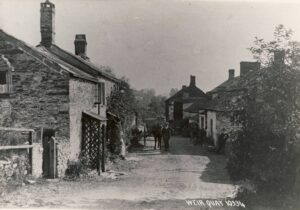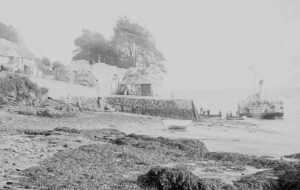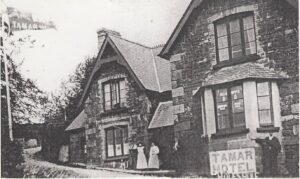Weir Quay, Holes Hole, Gullytown and Cotts
Although Bere Alston and Bere Ferrers are the two principal villages on the peninsula, some smaller hamlets near the Tamar are worth exploring, using footpaths and local lanes. In its 19th century heyday, Weir Quay was a busy port and industrial community alongside the Tamar. It was dominated by its two metal smelters – one producing lead and the other mainly tin. For most of its operational history, the lead smelter processed ore from the mines on the Bere Peninsula, although when these mines closed by the 1860s, lead ore was imported. The ore processed in the tin smelter came from mines elsewhere in the Tamar Valley. The buildings alongside the road from Bere Alston as it approaches Weir Quay remain as important industrial heritage, with a number of structures still remarkably intact, giving a convincing impression of a 19th century industrial hamlet. The smelter buildings have been converted to private residences. There are also lime kilns at Weir Quay, to which limestone was brought from quarries at Plymouth. The processed lime provided vital inputs for local agriculture and horticulture, as well for use as mortar and limewash.
In the 19th century, nearby Holes Hole was the quay for the ‘market boat’ paddle steamers that linked the Bere Peninsula to Devonport. The Tamar was a vital means of passenger transport before the coming of the railway in 1890. Travellers arriving at the quay faced a stiff climb back up their homes in Bere Alston, although they may first have taken the opportunity of some refreshment in the nearby ‘Tamar Hotel’ (the building still exists as a private dwelling). Holes Hole also had a lime kiln on its quay, and a basket works operated just across the road. Many kinds of baskets were made there, using willow, for horticultural and other uses.
A short way up the hill from Weir Quay, the houses at Gullytown and Cotts are further reminders of the industrial past. The row of terraced cottages and a former chapel at Cotts are an especially distinctive reminder of the industrial past.



